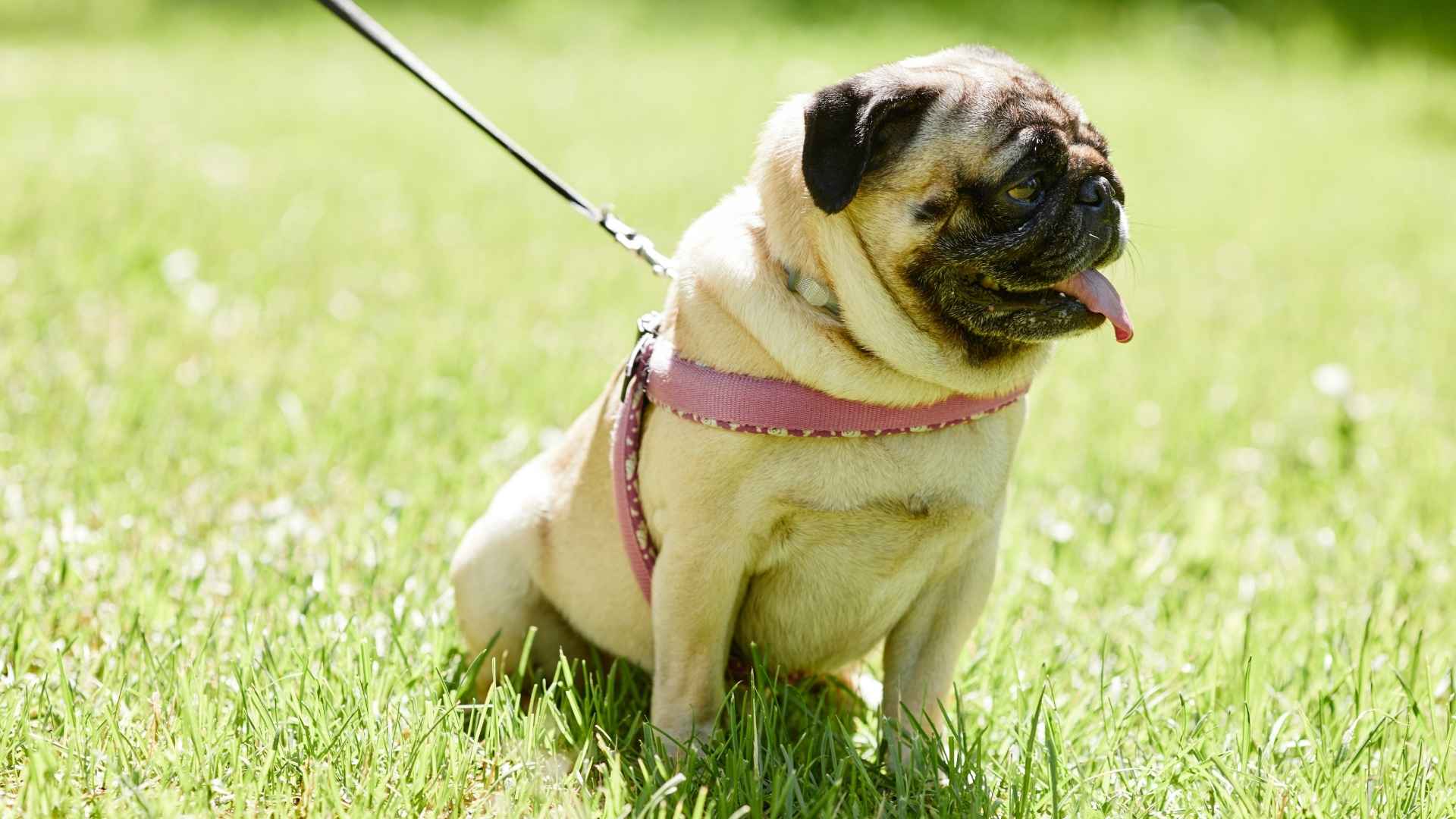Not all dogs handle heat the same way. Some pups turn into panting, miserable shadows of themselves the moment the temperature rises above 75 degrees. Others can barely make it through a short walk without overheating.
The truth is, certain breeds face serious health risks when summer heat kicks in. We’re talking about dogs whose body temperature regulation systems just weren’t built for hot and humid climates.
Whether it’s their thick double coat, flat face, or sheer size, these breeds need extra care when the mercury climbs.
Dog Breeds That Don’t Do Well in the Heat
1. English Bulldog
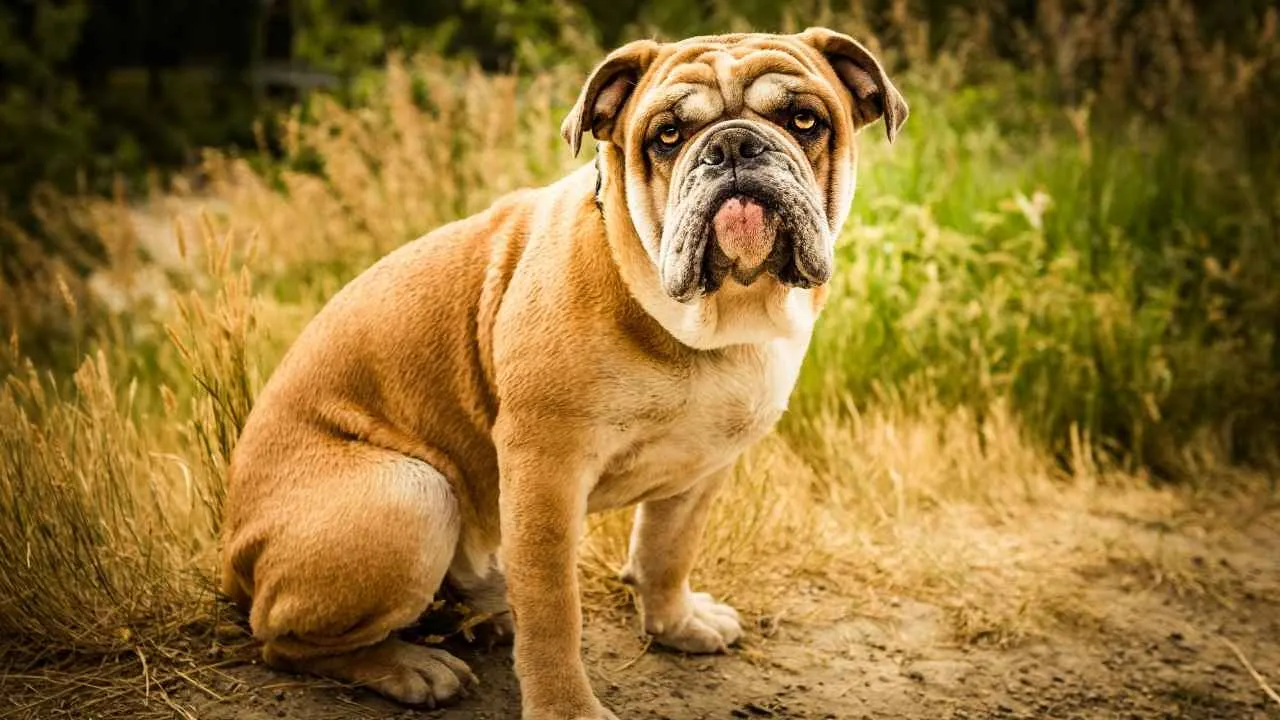
Size: 14-15 inches
Weight: 40-50 pounds
Lifespan: 8-10 years
Temperament: Friendly / Courageous / Calm
Origins: 13th-century England for bull-baiting sports
Originally bred in England for bull-baiting (thankfully, that’s ancient history), these dogs weren’t designed with hot climates in mind. Their compressed airways make panting – a dog’s primary cooling mechanism – extremely inefficient.
Exercise, excitement, or warm weather intensifies their breathing difficulties, creating a perfect storm for overheating. English Bulldogs rank as one of the most heat-sensitive breeds on the planet, and their popularity doesn’t change this harsh reality.
These wrinkly-faced champs have captured hearts worldwide, consistently ranking in the most popular breeds according to the American Kennel Club.
But here’s where their charm becomes a serious concern. Their energy levels might seem manageable compared to high-energy breeds, but even moderate activity in warm weather can spell disaster. These are one of the most affectionate dogs.
2. Siberian Husky

Size: 20-23.5 inches
Weight: 35-60 pounds
Lifespan: 12–14 years
Temperament: Loyal / Outgoing / Mischievous
Origins: Northeast Siberia by the Chukchi people for sledding
These stunning dogs need specific dietary considerations during warm months. High-protein, calorie-dense foods that fuel their bodies through Siberian winters become problematic in summer heat. Smart pet parents switch to lighter meals during hot spells, focusing on hydration over heavy nutrition.
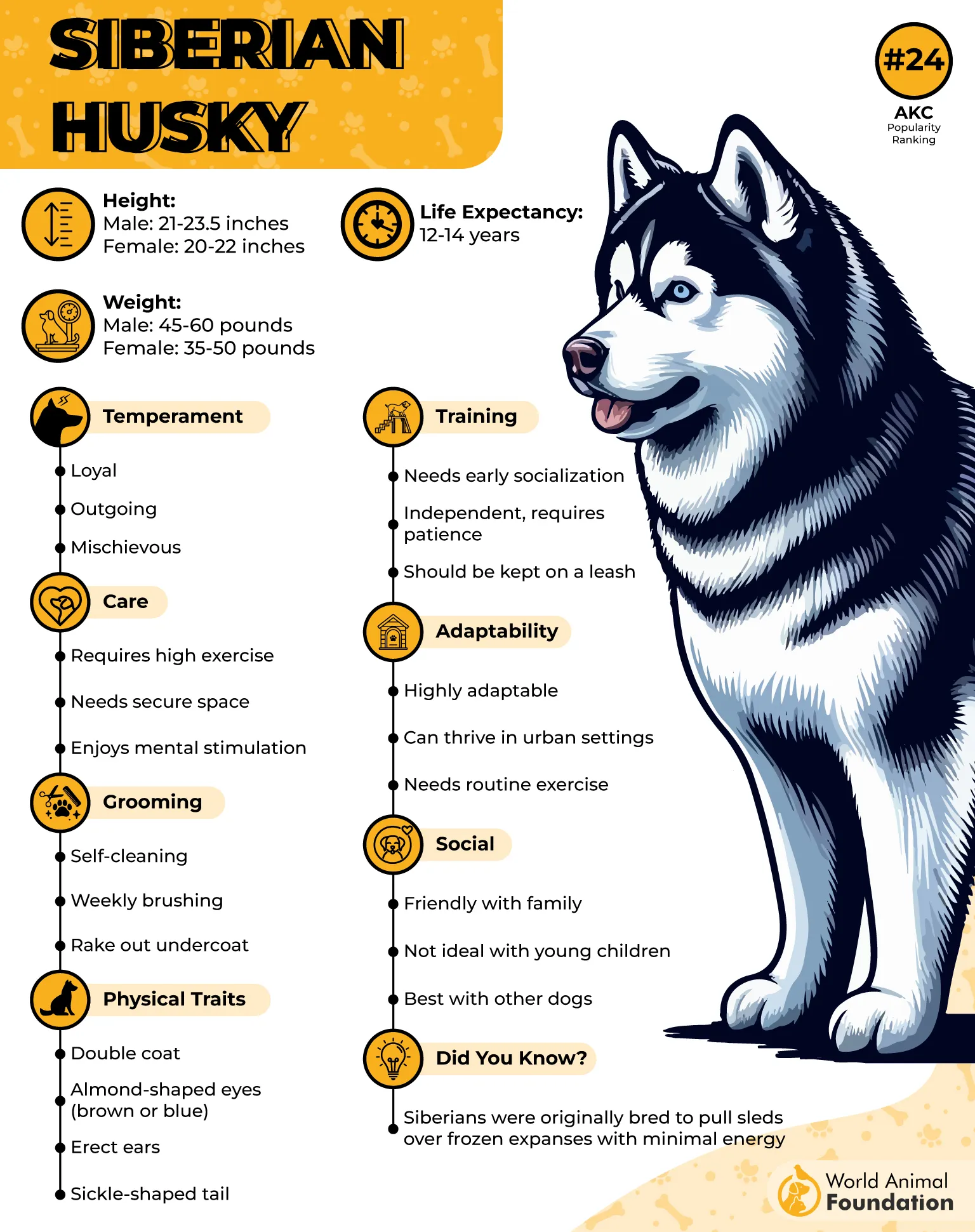
Huskies despise hot weather, and they’re not shy about showing it. Their loyal temperament shifts dramatically when temperatures climb – these normally energetic, playful dogs become lethargic and miserable.
Huskies shed their fur for the summer, shedding part of their coat to ensure it’s not too dense, but this natural process isn’t enough to prevent overheating. Their double coat works against them in hot climates, trapping heat instead of providing cooling relief.
The bottom line? If you live somewhere that regularly hits 80+ degrees, a Husky will struggle. It’s crucial to limit their exercise during the hottest part of the day and avoid pavement or hot surfaces that can burn their sensitive paw pads.
3. Chow Chow
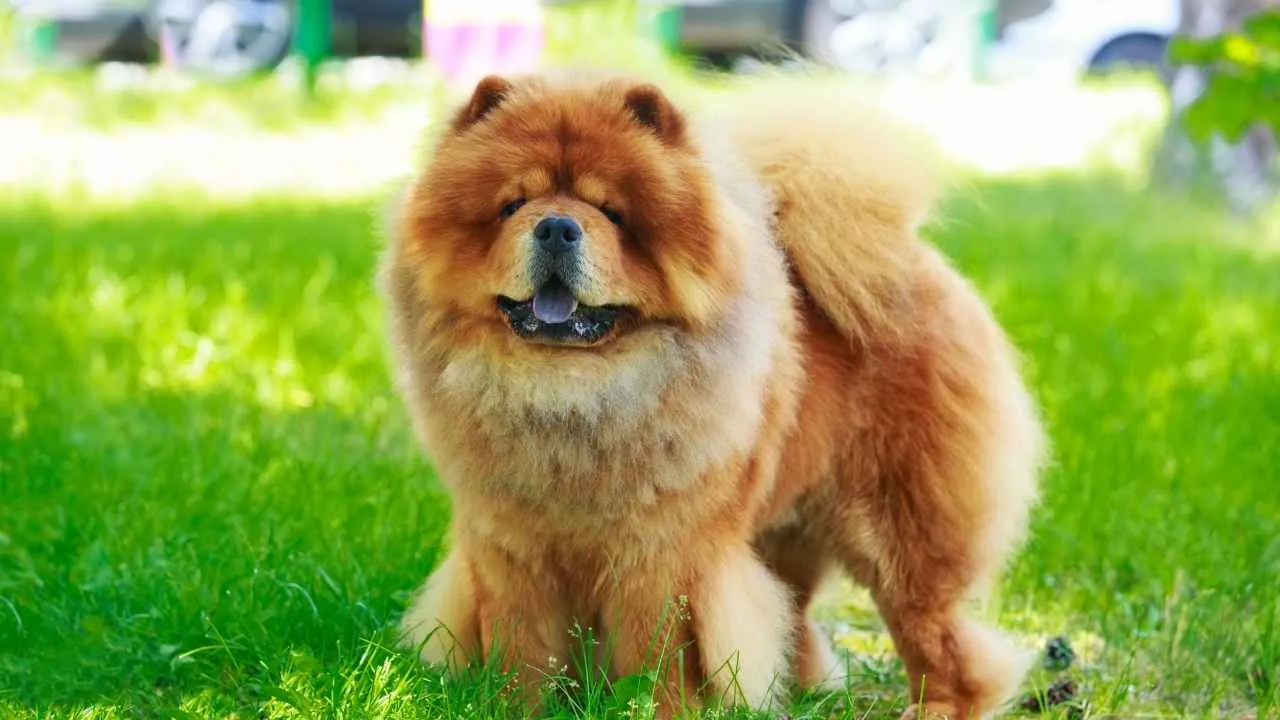
Size: 17-20 inches
Weight: 45-70 pounds
Lifespan: 8-12 years
Temperament: Serious / Dignified / Bright
Origins: Ancient Mongolia and northern China as working dogs
Chow Chows are a fascinating grooming challenge that directly impacts their heat tolerance. These teddy bear-looking dogs require extensive daily brushing to prevent their dense coats from matting, which makes heat retention worse.
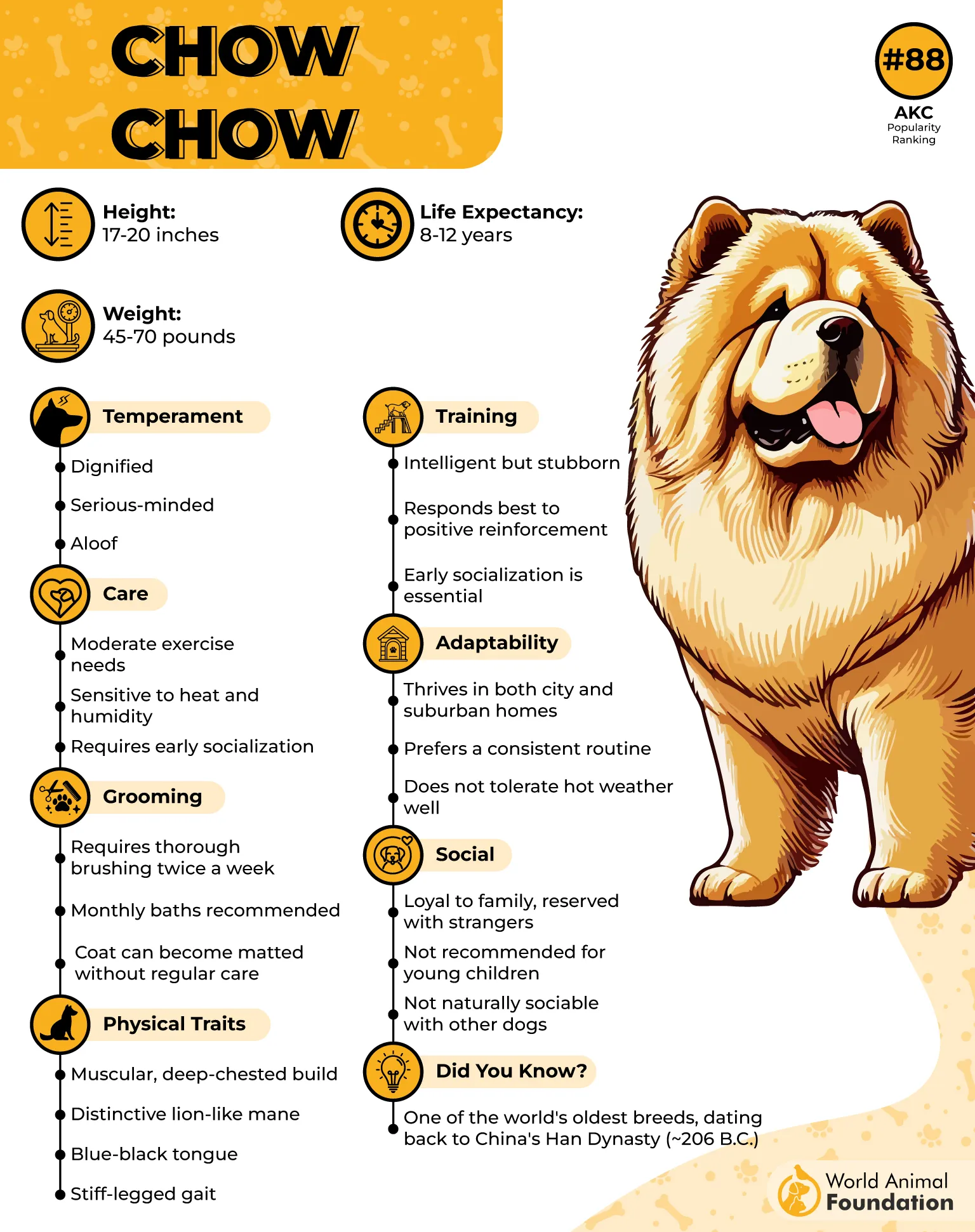
As noted by Britannica, the Chow Chow is one of the most ancient dog breeds, instantly recognizable by its thick, lion-like mane, stiff-legged gait, blue-black tongue, and lush double coat. Their exercise needs create a catch-22 situation during the summer months.
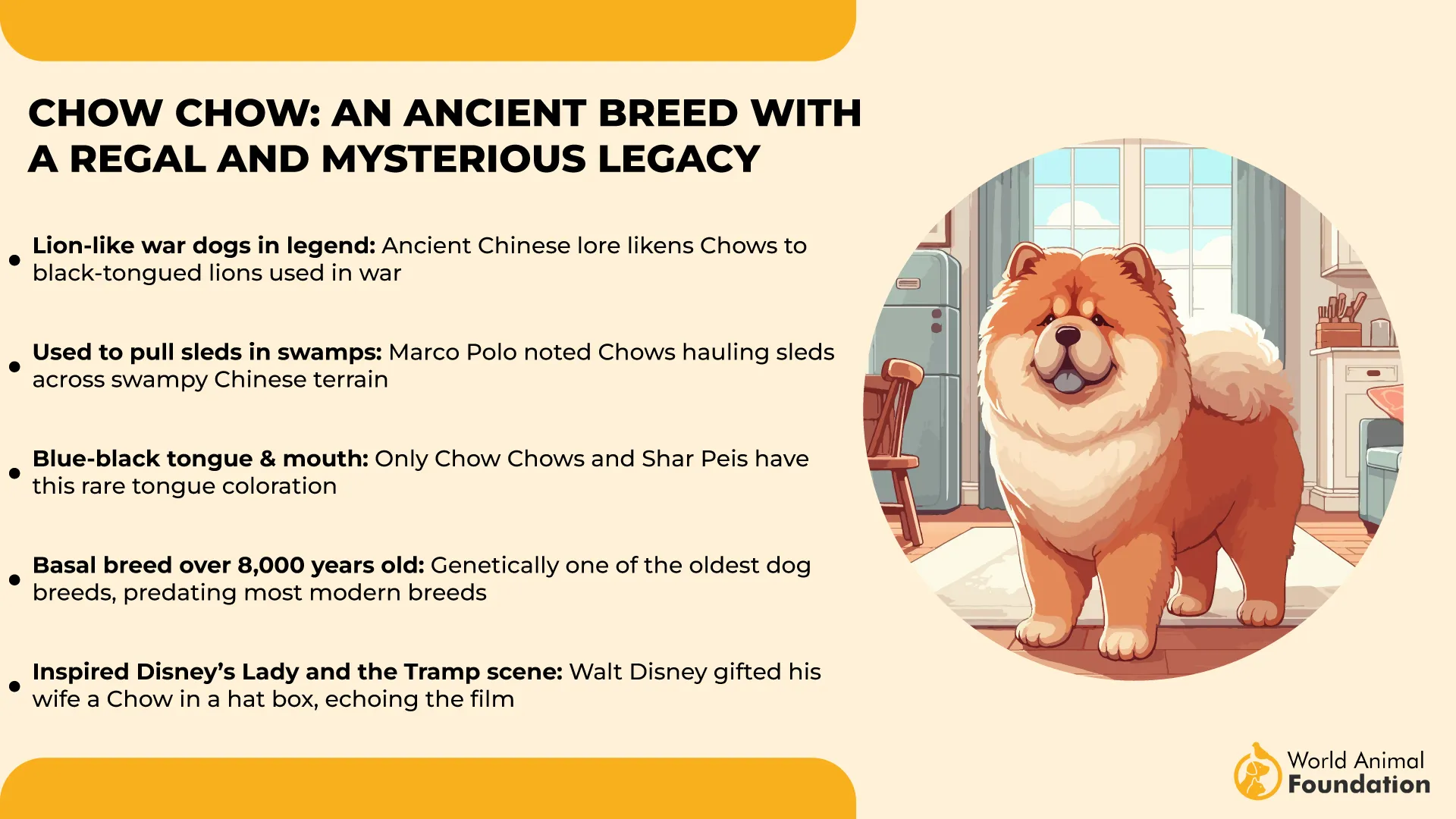
These dogs need regular physical activity to maintain health, but their thick coats make even moderate exercise dangerous when temperatures rise. Smart owners adjust to early morning or late evening walks, avoiding the hottest parts of the day.
Their energy levels naturally decrease in warm weather as a protective mechanism, but this can worry owners who don’t understand it’s normal behavior. Unlike active dogs that maintain high energy regardless of temperature, Chow Chows instinctively conserve energy to prevent overheating.
4. Pug
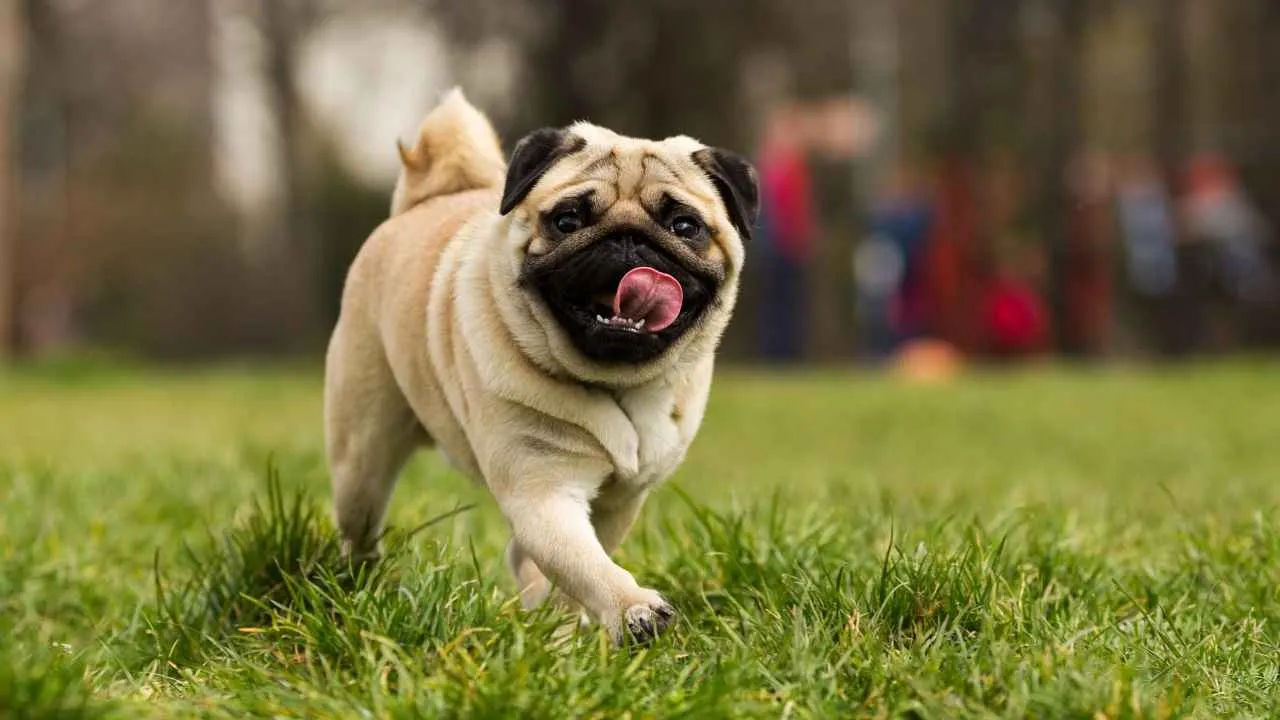
Size: 10–13 inches
Weight: 14–18 pounds
Lifespan: 13–15 years
Temperament: Charming / Loving / Mischievous
Origins: Ancient China as companions for emperors
Keeping Pugs happy and entertained during hot weather requires serious creativity and planning. These social butterflies thrive on interaction and play, but summer heat severely limits their favorite activities.
Indoor entertainment becomes essential for Pugs during warm months. Puzzle toys, treat-dispensing games, and gentle indoor training sessions replace outdoor adventures. Many Pug owners invest in cooling mats, frozen treats, and air conditioning to create comfortable environments for play.
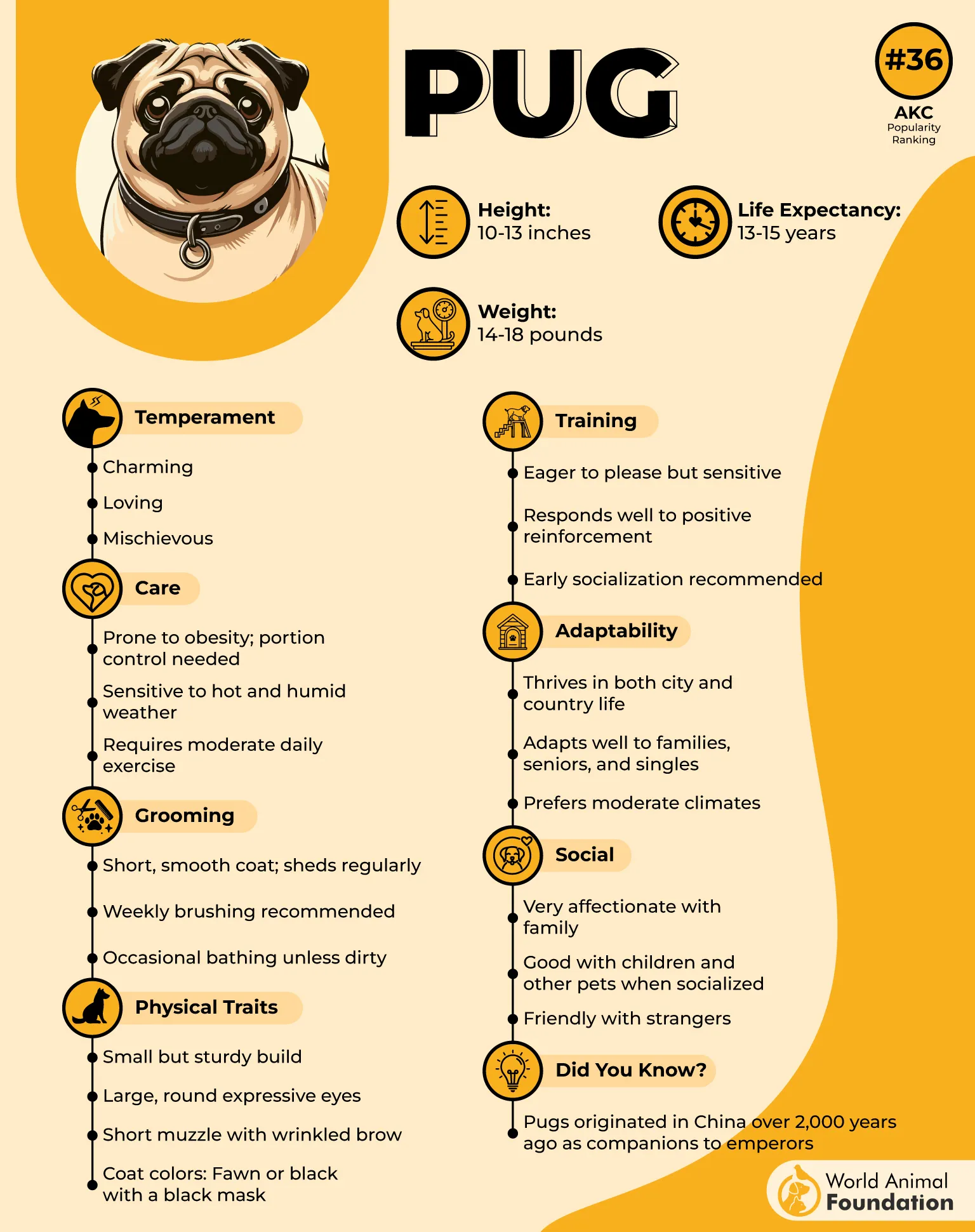
Mental stimulation helps replace physical exercise when outdoor activities become dangerous. Pugs are intelligent dogs who enjoy learning new tricks, making hot days perfect for teaching commands in cool indoor spaces.
The key to Pug happiness during summer involves recognizing early signs of heat stress. These dogs often push themselves beyond safe limits because they want to please their owners and continue playing. Responsible pet parents learn to call a timeout before their Pug reaches dangerous overheating levels.
Creating cooling stations throughout the house gives Pugs options when they feel too warm. Cold water bowls, shaded rest areas, and fans help these heat-sensitive pups stay comfortable during temperature spikes.
5. Boxer
Size: 21.5-25 inches
Weight: 50-80 pounds
Lifespan: 10–12 years
Temperament: Fun / Bright / Affectionate
Origins: 19th-century Germany, as hunting and working dogs
Boxer care during hot weather requires understanding their unique combination of breathing challenges and high-energy personalities. These athletic-looking dogs fool many owners who assume their muscular build means better heat tolerance.
The reality is more complex. Boxers have moderately flat faces that create breathing difficulties, especially when combined with their naturally active temperament. They want to run, play, and exercise regardless of temperature, making owner supervision crucial.
Smart Boxer owners invest in cooling gear like vests and elevated beds that promote air circulation. Swimming provides an excellent exercise alternative when available, allowing these active dogs to stay fit while staying cool.
The breed’s muscular build works against them in hot weather since muscle tissue generates significant body heat during activity. This means Boxers need more aggressive cooling strategies than smaller, less muscular breeds.
6. Boston Terrier
Size: 10–12 inches
Weight: 12–25 pounds
Lifespan: 11–13 years
Temperament: Friendly / Bright / Amusing
Origins: 1870s Boston from English Bulldog and Terrier crosses
Boston Terriers face unique care challenges due to their small size combined with brachycephalic features. These compact dogs overheat quickly but also lose body heat rapidly, creating temperature regulation difficulties year-round.
Their exercise requirements must be carefully managed during warm weather. Short bursts of gentle activity work better than sustained exercise, and timing becomes everything. Early morning walks before sunrise or late evening strolls after sunset become the norm.
Hydration needs special attention with Boston Terriers since their small body size means dehydration happens faster than with larger breeds. Fresh water must be available constantly, and many owners add ice cubes to water bowls during hot spells.
Indoor climate control becomes non-negotiable for Boston Terrier families. Air conditioning isn’t a luxury – it’s essential equipment for keeping these heat-sensitive pups safe and comfortable during the summer months.
Their smooth coat offers no insulation against heat, making them vulnerable to both overheating and sun exposure. Protective clothing and sunscreen designed for dogs become necessary for any outdoor time during peak temperature hours.
7. Alaskan Malamute
Size: 23-25 inches
Weight: 75-85 pounds
Lifespan: 10-14 years
Temperament: Loyal / Playful / Affectionate
Origins: Arctic Alaska by Inuit people for sledding and hunting
Alaskan Malamutes represent the ultimate example of dogs bred for cold weather conditions. These powerful working dogs were originally bred to pull heavy loads across frozen Arctic terrain, making hot climates their absolute worst nightmare.
According to the AKC, Alaskan Malamutes are true pack animals. Within your household, you must establish yourself as the leader; otherwise, this strong-willed breed may try to take over the role.
Their massive size compounds heat retention problems significantly. Large dogs generate more body heat naturally, and when combined with thick double coats designed for sub-zero temperatures, hot weather becomes genuinely dangerous for Malamutes.
Unlike many breeds that can adapt somewhat to warmer climates, Malamutes maintain their full winter coat year-round. This means they’re essentially wearing heavy winter jackets during summer heat waves, making even mild temperatures uncomfortable.
The breed’s working heritage means they want to stay active regardless of temperature, but responsible owners must override these instincts during hot weather. Heat stroke happens quickly with Alaskan Malamutes, making prevention absolutely critical.
Conclusion
When it comes to dog breeds that don’t do well in the heat, recognizing the warning signs early can mean the difference between a minor scare and a veterinary emergency.
Whether it’s the breathing issues that plague brachycephalic breeds, the thick double coats that trap heat, or the high-energy personalities that push dogs beyond safe limits, each breed requires specific summer safety strategies.
You, as the good and responsible pet parents, must become weather watchers and notice their physical traits as they have heat-related issues. Adjust their exercise schedules, monitor for heat stress signs, and create an environment to help them stay cool.


